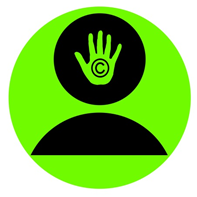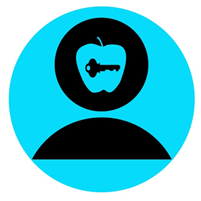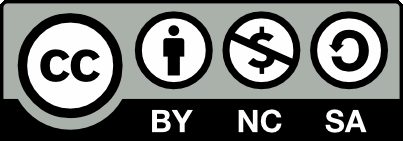
Classroom Connection - Primary Digital Citizenship - Creation and Credit Grade 1 Social Studies |
Authentic Task
Students will engage in a collaborative inquiry conversation about their roles, relationships and responsibilities as they relate to the use of technology, including age appropriate discussion of their school board’s Acceptable Use Policy. They will then co-create a classroom anchor chart describing their role in using digital resources (hardware, software and online) in a responsible and respectful manner.
Essential Understandings/Big Ideas
- Users of technology have responsibilities and need to demonstrate respect and responsibility when they use technology
- There are external rules (school board acceptable use policy) to follow in age appropriate ways when using technology
- Rules and expectations related to technology use protect users
Digital Citizenship Development

| Creation and Credit A digital citizen is one who - uses digital resources responsibly and adheres to user agreements
| 
| Health and Protection A digital citizen is one who… - implements precautions for online security (e.g., passwords, privacy settings)
- protects the privacy of self and others
- balances offline and online activities (e.g., gaming, texting, social networking, etc.)
- uses devices with attention to physical and mental health
|
Digital Citizenship Resources
|
Technology Integration
Students will develop foundational skills and knowledge for using technology at school.
Technology Integration Resources
Curriculum Content
Grade: 1
Subject: Social Studies
A. Heritage and Identity: Our Changing Roles and Responsibilities
Overall Expectation
By the end of grade 1, students will:
A2. Inquiry: use the social studies inquiry process to investigate some aspects of the interrelationship
between their identity/sense of self, their different roles, relationships, and responsibilities, and
various situations in their daily lives
A.3 Understanding Context: demonstrate an understanding that they and other people have different roles, relationships, and responsibilities, and that all people should be treated with respect, regardless of their roles, relationships and responsibilities
Specific expectations:
A2.1 formulate questions to guide investigations into some aspects of the interrelationship between events, people, and/or places in their lives and their own roles, relationships, responsibilities, and identity/sense of self
A2.5 evaluate evidence and draw conclusions about some aspects of the interrelationship between events, people, and/or places in their lives and their own roles, relationships, responsibilities, and identity/sense of self
3.1 describe some of their own roles, relationships and responsibilities
A3.4 identify some elements of respectful behaviour that they can practise in their everyday life
A3.5 demonstrate an understanding that it is important to treat other people and the environment with respect
Curriculum Resources
Teaching and Learning Strategies
- Plan to include this learning as part of a larger inquiry investigating roles and responsibilities (suggested sequence: classroom, schoolyard, community, computer/online)
- Prior to starting this learning task, teachers should familiarize themselves with their board’s Acceptable Use Policy.
- Model responsible, ethical and considerate use of technology during modelled and shared technology use prior to starting this learning task.
- Discuss the word, “responsibility” as a group. Students can self-reflect and then share their ideas with a partner (turn and talk, knee to knee)
- Record student responses on interactive whiteboard or chart paper
- Discuss: “Why do we have to be responsible when we are using technology and digital tools?” Record student responses
- Introduce the acceptable use policy to students and explain the significance of it and explain the terms “appropriate” and “inappropriate” or “acceptable” and “unacceptable” to use for constructing the anchor chart.
- Create an anchor chart of acceptable usage of school computer equipment and digital tools from the Acceptable Use Policy that are appropriate for grade level
- Use pictures, words or drawings to build the anchor chart.
- Post the anchor chart in a visible place in the class, library or other locations where students use technology.
Next Steps - Revisit the anchor chart regularly with students to make sure they are following the expectations of the acceptable use policy when using technology/digital tools
- Use the anchor chart to support student learning when teachable moments arise
- Continue to build the anchor chart as student learning deepens and new learning occurs
Resources
Digital Citizenship Resources Name | Type | Description and Connections to Learning | School Board Appropriate Use Agreement | Online | Find this on your school board’s website. Prior to discussing technology use with students, teachers should be familiar with their own board’s Acceptable Use Policy. Re-writing acceptable use policy into a student-friendly language anchor chart to display in classroom for reference | Using the Acceptable Use Policy as an Educational Tool | Website | Lessons/activities teaching students about the importance of of a school’s acceptable use policy | Common Sense Media Rings of Responsibility Digital Citizenship Pledge Going Places Safely | Website | Suggested Lesson Plans. Lessons for older students may be adapted by the teacher. Select the lessons that best meet student learning needs. | Global Digital Citizen Digital Citizenship Primary School Agreement
| Website | Suggested technology use agreement for primary age students. Includes ways students can look after themselves, others as well as property while working and playing online. A helpful guide to look at prior to introducing the topic or to use with students to extend their initial thoughts. | Planet Nutshell: Staying Safe on the Internet | Video | Age appropriate video discusses ways to stay safe while online. A good resource for introducing conversations about the Internet. | Planet Nutshell: What is personal information?
| Video | Discusses what personal information means in an age appropriate way. A good resource for discussing game registration, social media tools and the general internet. | Netsmartz Tell a Trusted Adult | Video | Age appropriate cartoon video teaches students to tell an adult when have have a problem. Good introduction for discussing “What to do if...” within the context of online safety. | NetSafe Utah Be Kind Online | Video | Age appropriate video discusses the importance of being kind and caring when using the Internet. Good introduction to the idea of digital citizenship as an expectation. | Polkadots Googly Eyes - Dooby Wop the Robot teaches the Polkadots about Cyber Safety | Video | This short video presents a song to help children remember online safety rules. | Common Sense Media: My Online Neighbourhood | Video | Narrated by a seven year old, this video presents realistic activities that young children might engage in on the Internet. Uses the analogy of the Internet as a neighbourhood to discuss safety. Good introduction to online safety. | Creative Conspiracy Child Focus 'E-safety' | Video | This short, simple and wordless video shows young children that they should tell an adult when they see something unusual on the internet. | FranklinTV Franklin and the Computer | Video | Franklin chooses to play a computer game and misses out on experiences with his friends. A good resource for discussing the need for limits on screentime. Available on Learn360 (licenced for all boards) and YouTube. | Media Smarts Backgrounder: What is an Acceptable Use Policy? | Website | Information for teachers to better understand what acceptable use policies are and their role in student technology use. |
Technology Integration Resources Name | Type | Description and Connections to Learning | SMART Board | Interactive whiteboard | Anchor chart may be co-constructed digitally. |
Curriculum Resources

OSAPAC 2014 |
|
|
|